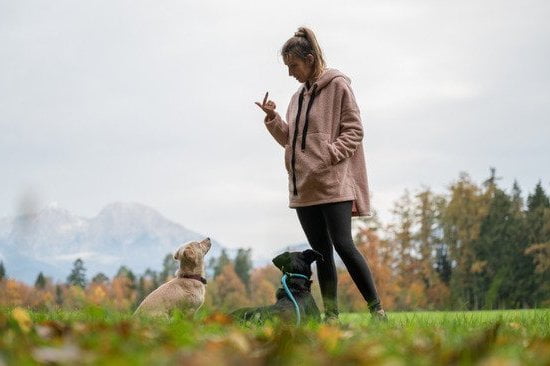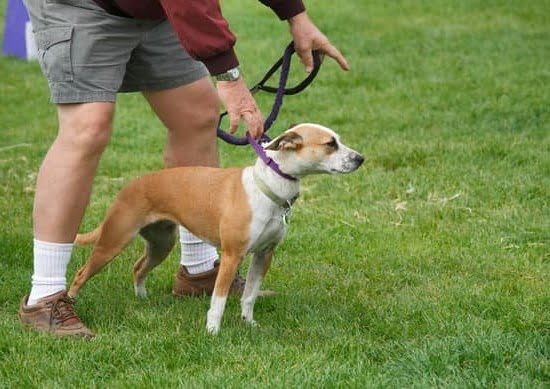Are you looking for a new way to communicate with your dog? Dog training buttons may be the solution you’ve been searching for. These innovative devices are designed to help dogs communicate their needs, wants, and emotions by pressing specific buttons that produce recorded words or phrases. In this article, we will explore the world of dog training buttons, including how they work, their benefits, and tips for successfully implementing them in your pet’s training routine.
Using dog training buttons can revolutionize the way you interact with your furry friend. Not only do they provide an outlet for dogs to express themselves, but they also create a deeper level of understanding between pets and their human companions. By incorporating these buttons into your training regimen, you can strengthen the bond with your dog and improve communication in a fun and engaging way.
When it comes to choosing the right dog training buttons for your pet, there are several factors to consider. From durability and ease of use to programmable options and sound quality, finding the perfect set of buttons is essential for successful training. In the following sections, we will delve into the various types of training buttons available on the market and provide guidance on selecting the most suitable option for your canine companion.
Benefits of Using Dog Training Buttons for Communication
Dog Training Buttons have revolutionized the way we communicate with our dogs. These devices provide a means for our four-legged friends to express their needs and desires, leading to better understanding and improved communication between humans and canines. The benefits of using dog training buttons for communication are numerous and have been proven to enhance the bond between pet and owner.
One of the key advantages of utilizing dog training buttons is the ability to give dogs a voice. By pressing a specific button that corresponds to a certain action or need, dogs can clearly communicate their desires, whether it’s for food, water, playtime, or a trip outdoors.
This not only reduces frustration for both the dog and the owner but also creates a more harmonious living environment. Additionally, it promotes mental stimulation in dogs as they learn to associate specific words with actions.
Furthermore, using dog training buttons can significantly improve behavior and obedience in dogs. By teaching them to associate words with actions through the use of these buttons, pet owners can effectively communicate commands and expectations to their furry companions. This creates a positive reinforcement system that empowers dogs to make better choices and understand boundaries. Ultimately, this leads to a more well-behaved and responsive pet.
In addition, another benefit of dog training buttons is the potential for early detection of health issues in dogs. Since these devices allow dogs to express discomfort or pain by pressing designated buttons, it enables owners to address potential health concerns promptly. This proactive approach can ultimately save time and money on veterinary bills while ensuring the overall well-being of the pet is prioritized.
Choosing the Right Dog Training Buttons for Your Pet
When it comes to choosing the right dog training buttons for your pet, there are a few important factors to consider. The first thing to think about is the size and durability of the buttons.
You want to make sure that they are large enough for your dog to easily press with their paw or nose, and also sturdy enough to withstand repeated use. Some popular options include buttons with a diameter of 2-3 inches, made of durable plastic or metal.
Another important consideration is the number of buttons you will need. This will depend on the complexity of the communication you want to establish with your pet. For simple commands or requests, a smaller set of buttons may suffice. However, if you want to teach your dog more complex phrases or engage in longer conversations, a larger set of buttons with more options may be necessary.
It’s also crucial to think about the layout and design of the buttons. Many pet owners choose colorful and visually distinct buttons, as this can help dogs differentiate between different commands or words more easily. Some training button sets even come with customizable options for adding pictures or symbols next to each button, which can further aid in communication with your pet.
| Factors | Considerations |
|---|---|
| Size and durability | Large enough for easy pressing, sturdy material |
| Number of buttons | Determined by complexity of communication desired |
| Layout and design | Colorful, visually distinct, customizable options available |
These are just a few key elements to keep in mind when choosing dog training buttons for your pet. Taking the time to select the right set for your specific needs and your dog’s abilities can greatly enhance the effectiveness and success of using this communication tool in training and interacting with your furry companion.
How to Introduce and Teach Your Dog to Use Training Buttons
Dog training buttons are a revolutionary tool for teaching dogs to communicate with humans. These buttons typically have words or phrases recorded on them, such as “outside,” “play,” or “food.” By pressing the corresponding button, dogs can effectively convey their needs and desires to their owners. But how do you introduce these buttons to your furry friend and teach them how to use them?
The first step in introducing dog training buttons is to select the right buttons for your pet. Consider your dog’s personality, needs, and communication style when choosing the words or phrases for the buttons. Once you have the appropriate buttons, it’s time to start teaching your dog how to use them.
Start by placing the buttons in a designated area where your dog spends most of their time. Encourage your dog to interact with the buttons by pressing them yourself and associating each button with its respective action or item.
Consistency is key when teaching your dog to use training buttons. Repetition and positive reinforcement are essential in this process. Every time your dog presses a button and successfully communicates a need or desire, reward them with verbal praise, treats, or affection. It’s also important to be patient and understanding during this learning phase. Some dogs may pick up on using the buttons quickly, while others may take more time to understand their purpose.
As you continue working with your dog on using training buttons, observe their progress and adjust your methods as needed. If you notice any confusion or hesitation from your pet, consider simplifying the commands or providing additional encouragement. With dedication and guidance, most dogs can learn to effectively use training buttons as a means of communication.
| Benefits | Data |
|---|---|
| Improved Communication | Dogs can effectively convey their needs and desires |
| Bonding | Owners spend more quality time interacting with their pets through button activation |
| Mental Stimulation | Button training engages dogs mentally and encourages cognitive development |
Common Mistakes to Avoid When Using Dog Training Buttons
Not Providing Adequate Training
One common mistake to avoid when using dog training buttons is not providing adequate training for your pet. Simply introducing the buttons and expecting your dog to understand their purpose and how to use them is unrealistic. It’s important to dedicate time to teach your dog what each button means and how to effectively communicate using them. Consistent reinforcement and positive reinforcement are crucial in this process.
Using Too Many Buttons at Once
Another mistake that dog owners often make when using training buttons is introducing too many buttons at once. Overwhelming your pet with a large number of buttons can lead to confusion and frustration, making it difficult for them to grasp the concept of communication through these devices. It’s best to start with a few basic buttons and gradually introduce more as your dog becomes proficient in using them.
Inconsistent Use of Buttons
Consistency is key when it comes to using dog training buttons. Inconsistently using the buttons or only using them during certain times can confuse your pet and hinder their progress in learning how to communicate effectively. It’s important for all members of the household to be on the same page when it comes to the use of these buttons, ensuring that everyone reinforces the same commands and responses.
Using Dog Training Buttons for Behavior Modification and Problem Solving
When it comes to behavior modification and problem solving, dog training buttons can be a game-changer for pet owners. Whether you are looking to address excessive barking, aggressive behavior, or simply improve communication with your furry friend, training buttons can provide an effective solution.
Addressing Problematic Behavior
One of the main benefits of using dog training buttons for behavior modification is the ability to clearly communicate with your pet. For example, if your dog tends to bark excessively when visitors arrive, you can teach them to press a specific button that signals they need attention or reassurance. By giving your dog an alternative form of communication, you can effectively address problematic behavior in a positive and non-confrontational way.
Problem-Solving With Training Buttons
In addition to addressing behavioral issues, training buttons can also be used for problem-solving. For instance, if your dog has a habit of scratching at the door when they need to go outside, you can introduce a “outside” button that they can press to indicate their needs. This not only helps prevent damage to your doors but also allows for clear communication between you and your pet.
Enhancing Communication and Bonding
Using training buttons for behavior modification and problem-solving not only improves communication with your pet but also strengthens the bond between you. It allows for a deeper level of understanding and interaction as you work together to address specific challenges. Additionally, it empowers your dog by giving them a voice and the ability to express their needs in a constructive manner.
Success Stories
Dog owners all over the world have been astounded by the success stories of dogs using training buttons to communicate effectively with their humans. Here are a few real-life examples of how these buttons have made a positive impact on both the dogs and their owners.
- Winston the Golden Retriever: Winston’s owner, Emily, introduced him to a set of communication buttons when he was just a puppy. Over time, Winston learned to press specific buttons to indicate when he was hungry, needed to go outside, or wanted to play. This not only helped Emily understand Winston’s needs better but also strengthened their bond as they were able to communicate more effectively.
- Lola the Labrador: Lola’s family was struggling with her separation anxiety whenever they had to leave her home alone. They decided to try using dog training buttons as a way for Lola to express her emotions while they were away. To their surprise, Lola started using the “miss you” button whenever she felt lonely, which helped her family understand her feelings and provided comfort for Lola even when they were not physically present.
- Bailey the Border Collie: Bailey’s owner, Mark, used training buttons not only for everyday communication but also for behavior modification. Whenever Bailey exhibited unwanted behavior such as excessive barking or jumping, Mark would guide Bailey to press the “calm” or “gentle” button instead. With consistent reinforcement and positive reinforcement, Bailey’s behavior improved significantly over time.
These success stories demonstrate that dog training buttons are not only effective in meeting basic needs but can also be used for emotional expression and behavior modification. The key is consistency in training and patience in allowing your dog to adapt to this new form of communication. As more and more dogs experience success with these buttons, it is clear that they have a significant impact on canine communication and understanding between dogs and their human companions.
Tips for Consistency and Effectiveness in Using Dog Training Buttons
When it comes to using dog training buttons for communication, consistency is key. To ensure that your dog understands and uses the buttons effectively, it’s important to follow some tips for consistency and effectiveness in training.
Here are some tips to help you maintain consistency and effectiveness in using dog training buttons:
- Establish a routine: Set specific times each day for training sessions with the buttons. Consistency will reinforce the learning process for your dog.
- Use clear and consistent cues: When introducing new buttons or reinforcing existing ones, use clear and consistent verbal cues to help your dog understand the association between the button and the desired action.
- Stay patient and persistent: Learning how to use the training buttons may take time for your dog, so it’s important to be patient and persistent in your training efforts. Celebrate small victories along the way.
In addition, it’s important to provide a supportive environment for your dog as they learn to use the training buttons. Make sure that the buttons are easily accessible and clearly labeled to avoid confusion.
Consistency also extends to everyone in the household who interacts with the dog. It’s important that all family members or caregivers use the same cues and reinforce consistent button usage with positive reinforcement.
By following these tips for consistency and effectiveness in using dog training buttons, you can help ensure that your pet successfully learns how to communicate using this innovative tool. With patience, persistence, and a supportive environment, both you and your dog can reap the benefits of effective communication through training buttons.
Conclusion
In conclusion, the use of dog training buttons has proven to be an effective tool in enhancing communication between humans and their canine companions. As we continue to explore and understand the capabilities of dogs in using these buttons, it is clear that they have the potential to revolutionize the way we interact with and train our pets.
The future of dog training buttons looks promising, with ongoing research and development aimed at improving their functionality and accessibility for all dog owners.
The impact of dog training buttons on canine communication cannot be understated. By giving dogs a means to express themselves more clearly, we are fostering a deeper understanding of their needs, desires, and emotions. This not only strengthens the bond between humans and dogs but also promotes a more harmonious and fulfilling relationship.
As we look ahead, it is important for dog owners to approach the use of training buttons with patience, consistency, and a deep understanding of their pet’s individual learning style. Additionally, seeking guidance from professional trainers or behaviorists can provide invaluable support in utilizing this innovative tool effectively. With continued dedication to research and education in this area, we can expect even greater advancements in the field of canine communication through the use of dog training buttons.
Frequently Asked Questions
Are Dog Training Buttons Good?
Dog training buttons can be beneficial for facilitating communication between dogs and their owners. These buttons can help dogs convey their needs, emotions, or simply communicate with humans in a unique way.
How Do You Train Dogs to Use Buttons?
Training dogs to use buttons involves consistent and patient effort from the owner. Start by introducing the buttons, associating each with a specific action or word, and then encouraging the dog to use them through positive reinforcement and reward-based training methods.
What Dog Buttons Should I Start With?
When starting with dog buttons, it’s best to begin with basic concepts like “outside,” “play,” “food,” or “water.” These fundamental needs are easy for dogs to understand and can help them grasp the purpose of the buttons before moving on to more complex phrases or requests.

Welcome to the blog! I am a professional dog trainer and have been working with dogs for many years. In this blog, I will be discussing various topics related to dog training, including tips, tricks, and advice. I hope you find this information helpful and informative. Thanks for reading!





